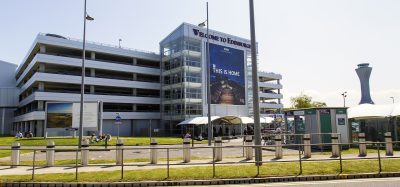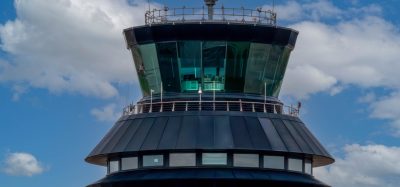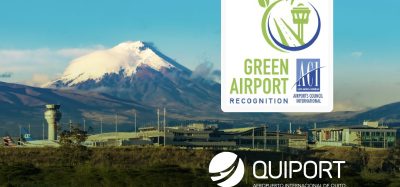Showcasing airport positivity during the COVID-19 crisis
Posted: 8 June 2020 | Airport Regions Council | No comments yet
Airports and aviation organisations share COVID-19 experiences with Airport Regions Council (ARC), including innovative solutions that proved efficient.


For the last couple of months, we have been surrounded mainly by negative news and prognoses about the aviation sector in regard to COVID-19. With the start of 2020, the world was presented with this inevitable new reality as coronavirus changed everyone’s daily routine. Now, with lockdowns slowly being lifted in most European countries, we are left wondering – how long will it take for us to return to normality? How much will it cost and who will be paying? Or, will we have to get used to a ‘new normal’?
On the topic of a new normal, the question of air travel remains, but one thing is certain – the aviation sector has suffered the consequences of the pandemic instantly and it will take years to recover. Air travel will not be the same and every party involved – airports, airlines and airport regions – will have to adapt.
The Airport Regions Council (ARC) wants to showcase some of the good practices of our members – airport regions – around Europe. We asked our members to spread some positivity – how did they cope with new challenges and what did they learn? Their good practices might help other airport regions or local and regional authorities who find themselves in similar situations.
We present you three different stories from our members in France, Finland and Spain. All of them had their own challenges to deal with and their own way to solve them.
Helping others during COVID-19
The region of Val d’Oise, France
Emmanuelle Desthieux, Business Development and International Affairs Project Manager, CEEVO
The Val d’Oise region is located a few kilometres north of Paris and is the home to Paris-Charles de Gaulle Airport – the biggest European airport in terms of passengers. It is also home to Paris-Le Bourget Airport, which is Europe’s leading business airport. Similar to most areas surrounding airports across the world, the territory of Val d’Oise has been especially affected by the suspension of air traffic, which in turn has led to a short-term suspension of all related economic activities.
To mitigate the consequences of the crisis, CEEVO (the French Agency for Development and Attractiveness of Val-d’Oise-Paris Region) has mobilised its staff to support companies impacted by the COVID-19 pandemic. CEEVO’s team informed them about the available national and regional financial incentives and maintained the link between the relevant bodies, for instance the Regional Council of Ile-de-France, the Prefecture, various Departments of State, territorial governments and the professional and economic organisations of Val d’Oise region.
The experts from the development agency were responsible for contacting the companies individually – not only to provide them with information concerning the financial support available but also to consult them about many different accessible platforms for finding protective equipment (masks and hydroalcoholic gel for example), which was necessary in order to restart their activities as soon as possible.
Additionally, the Departmental Council of Val d’Oise provided personal protective equipment (PPE) to hospitals and medical professionals and, continuously, to Val d’Oise citizens. The Departmental Council, in cooperation with the Air France foundation and Aéroports de Paris, also provided laptops to pupils to enable them to continue to follow their studies online.
COVID-19 brings new insights on urban planning
Aviapolis Airport City, Finland
Johanna Rajala, Aviapolis District Architect, Head of the Aviapolis Detailed Planning Unit
Aviapolis is a business, retail, entertainment and housing area in central Vantaa, Finland. It is only 15km away from Finland’s capital, Helsinki. Because of the COVID-19, we are facing a new era in city planning. While the main focus is still directed to making a diverse, pedestrian-friendly and green airport city, current challenges showed that we have to think out of the box. Unexpected situations and scenarios should be incorporated into the overall planning strategies using the best knowledge available. This can also be taken into consideration while creating masterplans and detailed plans. Spaces in the centre are planned to be flexible and thus capable of being transformed into different use easily. At this point, we could say that the unpredictability is a strength of the place. For instance, temporary uses are encouraged in urban planning.
Recently, a web survey for residents, landowners and developers was carried out. Despite the current situation with COVID-19, the feedback was rather positive. The answers correlated with the planning concept that has been in development over the last few years. The future of the Aviapolis Airport City was seen as a mix of three types of district: Green city centre with a forest-like ambience; urban and green working district; and a modern and diverse city centre where valuable heritage is preserved. According to the survey Aviapolis is seen as “a gate to opportunities”. This is our goal.
The existing green environment, as well as the built environment, are thus seen as strengths of Aviapolis. The importance of the local neighbourhood and nature has been highlighted during the pandemic. This may have an impact on the planning of parks, pedestrian streets and squares. More space is needed and the quality of the urban outdoor spaces is essential. The essence of leisure and free time may have changed. People meet each other more often in outdoor places than before. Maybe they will commute to work increasingly by bicycle to avoid crowded public transport. We will see.
In 30 years we are hoping to see Aviapolis Airport City as a vibrant and green city centre with thousands of inhabitants and working people. Vibrant and diverse atmosphere welcomes tourists as they can easily walk or alternatively take a light railway from the airport to the Aviapolis centre. The cityscape is interesting and unexpected; it surprises. Every time you see something new and different: You will want to come back to Aviapolis.
An unexpected boost for the airport
Autonomous Community of Catalonia, Spain
Elisabeth Oliva, Communication Officer, Aeroports de Catalunya
Lleida-Alguaire Airport is located in the West of Barcelona and, together with the airports of Barcelona, Girona and Reus, is a part of the commercial airport system of Catalonia.
In short, the high availability of industrial land, the good connections by road, high-speed train and the great weather conditions make this airport an ideal place to grow as an industrial airport. The airport was opened in 2010 and its focus was to become a platform for the aviation industry in Catalonia, embracing maintenance and repair operations (MRO), preservation, storage of aircraft, training, research and innovation activities in its facilities. It has held up to 20 different companies carrying out different activities, for example rocket tests, flying of large drones and providing training. Since 2017, Lleida-Alguaire Airport is the home to one of the most significant European flight schools with 20 aircraft. The airport also hosts different MRO operators and has immediate parking and storage capacity. In the last year, it has been hosting aircraft of various companies for maintenance and preservation matters. This has been done working side by side with the private company established at the airport, becoming one of the largest facilities in Europe currently hosting B373MAX.
Even before the beginning of COVID-19 pandemic, Lleida-Alguaire airport already had a clear vision: To be the industrial airport of Catalonia. At the beginning of 2020, once we were presented with the current challenges, the activity of the airport sped up. Since April, the airport has been offering its location and maintenance to all the companies interested in finding parking places for their aircraft. To ease the situation for the airlines, the airport has reduced aircraft parking fee by half. Additionally, an airport-based company that offers aircraft maintenance and repair services committed to expanding its working area by 10 hectares, where 50 more aircraft could park.
In the upcoming months, a public and private investment agreement will confirm the construction of more platforms and hangar spaces for the aircraft. This is great news for the airport, for the airport-based MRO company and also for the residents of the surrounding communities, who can look forward to the future jobs in the territory close by. COVID-19 did not have negative consequences to the main direction of the airport, but instead, it has only helped to promote our activity.
Sharing best practice to navigate COVID-19
These short stories from our members show how differently various regions were impacted by the crisis. During these times, it is essential to share best practices and work on common goals to be able to recover sustainably. We hope that by sharing these stories, we will inspire other airport regions or local/regional authorities to keep a positive attitude and be open to learning from challenging situations. We, as the Airport Regions Council, will keep sharing our knowledge and working for the airport regions.
Related topics
Airport cities, Airport crisis management, Airport development, Airside operations, COVID-19, Safety, Sustainability, Terminal operations
Related airports
Helsinki Airport (HEL), Lleida-Alguaire Airport, Paris Charles de Gaulle Airport (CDG), Paris-Le Bourget (LBG)
Related organisations
Aeroports de Catalunya, Aéroports de Paris (ADP), Airport Regions Council, Aviapolis Airport City, CEEVO


















